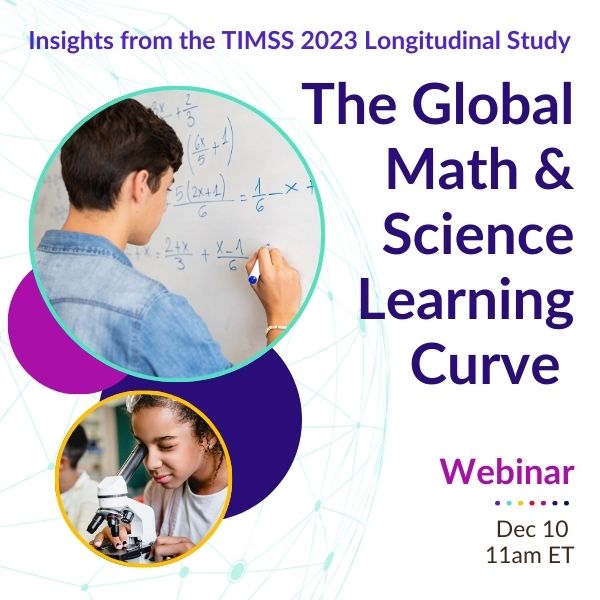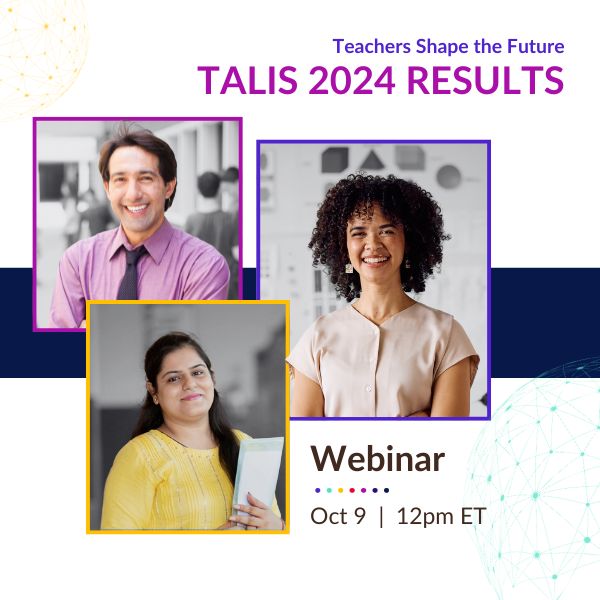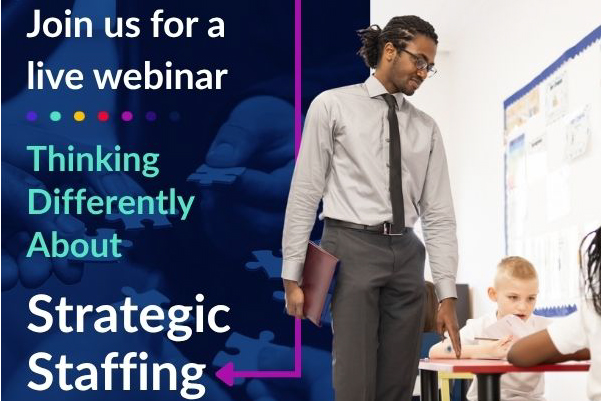A higher education degree or certificate continues to pay off economically, according to the Organisation for Economic Co-operation and Development (OECD), and degree attainment continues to improve globally.
That’s one of the takeaways from an NCEE webinar earlier this week as part of OECD’s annual Education at a Glance report. This year’s report has a focus on educational attainment at the university and post-high school level — what’s referred to as post-secondary in the United States and tertiary education by the OECD.
The National Center on Education and the Economy continued its tradition of partnering with OECD on its Education at a Glance’s release by hosting a webinar led by NCEE’s CEO, Dr. Vicki Phillips, and included a presentation by OECD’s Director of Education and Skills Andreas Schleicher. Following the presentation, Phillips guided a panel conversation with Assistant Secretary of Education Dr. Amy Loyd, President of the Kentucky Council on Postsecondary Education Dr. Aaron Thompson, Fort Lewis College President Dr. Tom Stritikus, and Northern Virginia Community College President Anne Kress.
Education at a Glance provides comparative data on education in over 70 countries with information on investment and organization of education systems, as well as access, outcomes, and achievement of learners. For the first time, the report is able to include data from before, during, and after the greatest impacts of the pandemic on schools and how students learn.
A century ago, the challenge was getting enough students to finish high school, but now, Schliecher explained, the issue of our time is getting people to complete a useful advanced degree.
At that time the picture looked quite similar to what we see here now for post-secondary education. And today, we ask that very same question for tertiary education. You know, how many people need some form of post-secondary education? And the answer is really everyone.
More adults have some type of advanced education across the OECD member countries compared to two decades ago, growing from about a quarter of adults to half. Those with higher education continue to have a lower unemployment rate and higher earning potential.
The conversation among the panel focused on improving both equitable access and better on-time completion so more people reap those benefits. For example, women make up the majority of enrollment in higher education institutions, but still lag behind when it comes to enrollment in STEM programs. Schleicher said improvement in getting more women or students with minority backgrounds enrolled could come from sparking interest at an early age.
It has to do with career exposure. You cannot be what you cannot see.
The group discussed how to improve access to different types of higher education and meet students’ needs so they are able to complete studies and earn a degree on time. According to Loyd, who oversees the Education Department’s Office of Career, Technical, and Adult Education:
We must grow multiple pathways to success through an array of post-secondary options, including, of course, the rich array of some baccalaureate options and apprenticeships. Our world has the opportunity to reimagine what education, could and should be to more equitably support and serve learners.
Associate degrees or certificates from career and technical programs don’t pay off as well for Americans as they do in other countries. Schleicher said countries such as Sweden, Norway, and Germany do a better job connecting programs to workforce needs and demands.
Kress, whose Northern Virginia Community College is one of the largest in the country, said that the pandemic made students reconsider the value of some degree programs.
We need to be very mindful about [the fact] that students have seen so much of their lives up-ended, they saw their lives disrupted. They understood that maybe the majors they had in the past were not going to be connected to the economy of the future, and I think it’s incumbent upon all of us to [make the connection].
On-time completion rates are low in many countries. Across the OECD only 39 percent of students who enter a bachelor’s program graduate within the standard duration (such as four years for a bachelor’s degree). Sixty-eight percent graduate within three additional years, but almost a quarter have dropped out.
The panel discussed making sure students have everything they need to be able to focus on their studies while in school and finish on time. Having to work a second job, for example, can derail some students. As Stritikus, the president of Fort Lewis College in Durango, Colorado, said:
What I’m hearing is the discourse shift from students being college ready to institutions being student ready.
Stritikus added that the pandemic showed colleges can meet more students’ needs around hunger and housing.
That level of support, however, will require more spending and funding. Thompson, who leads the Kentucky Council on Postsecondary Education, said there’s plenty of evidence that higher education is worthy of the investment, “but as higher education folk, we have done a terrible job singing like a choir.”
The United States continues to be top-heavy when it comes to investment in education, spending more on higher education than most countries, but less than average on early childhood. The U.S. “is almost a class of its own” on this measure, Schleicher said.
OECD also found that international student enrollment did not take as big of a long-term hit as was feared. Several countries reported an increase in international students in 2020 and 2021, although the rates have slowed compared to before the pandemic.
Something that OECD’s report confirmed is the continued investment and shift in digitalization of learning. However, OECD found about half of the countries it looked at have not changed their regulatory or institutional frameworks on digitalization and have no plans to do so.
You can read the entire 2022 Education at a Glance report on the OECD’s website. You can view the slides from Schleicher’s presentation and watch video of the webinar (above) to get the entire conversation and its insights.




